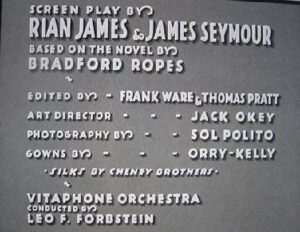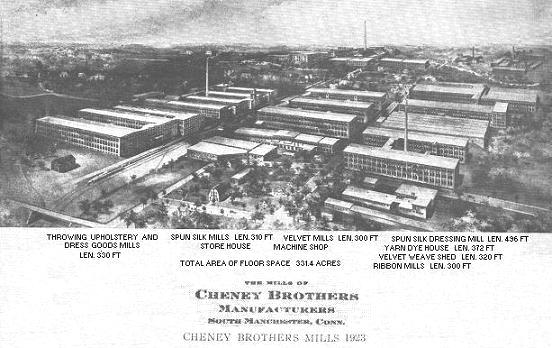THE CHENEY SILK MILLS By Susan Barlow, Manchester Historical Society
Beginning in 1838, Cheney Brothers built the silk mills that made Manchester famous and drew workers from throughout the United States and Europe. During the second Industrial Revolution (1860-1890), the Cheney business prospered, and eventually became the largest silk manufacturer in the country, and the only one to manage all phases of silk production except raising silkworms. Attempts to grow mulberry trees to nurture silkworms had failed, and the Cheney’s imported silk cocoons from the Orient.
By the early 1920s, the mills employed 4,700 workers, which was 25 percent of the town’s population. The Cheney family constructed the mill buildings between 1872 and 1917. The Cheney’s also built firehouses, electric and gas companies, schools, reservoirs, and hundreds of worker houses. The Cheney’s supported the construction of churches and other public buildings. They provided their employees with insurance, medical care, and retirement benefits. The Cheney’s were entrepreneurs, business executives, inventors, abolitionists, artists, architects, authors, philanthropists, and influential citizens of the town and state.
After the peak year of 1923, the silk industry began to decline. Cheney Brothers fell on hard times during the 1930’s, due in part to the Great Depression, the elimination of protective import tariffs, new fashion trends, and the arrival of synthetics. Textile production from all over New England moved to the southern states and to the Orient, where labor was cheaper. After reorganizing in 1935, Cheney Brothers rebounded somewhat during World War II with the development and production of nylon parachutes (Pioneer Parachute). But in 1955, the family made the painful decision to sell the company to J.P. Stevens, which immediately discontinued some operations, moved and sold off others. The last surviving textile operation, the Velvet Mill, closed in 1984. In the 1980’s and 1990’s, many of the empty mills were renovated and adapted for use as apartments.

In 1978, the mill area became a National Historic Landmark District. In 2002, the Town of Manchester purchased nine acres of the Great Lawn for open space to preserve this historic site.
At right is an excerpt from a 1937 edition of the Manchester Evening Herald, with a listing of houses sold during the auction of Cheney properties. Click the image to see an enlarged version. To access the segment of this website which is devoted to the auction, please click Cheney Property Auctions.

Webmaster’s note: Former Manchester resident Paul Barrett mentioned that the opening credits to the Warner Brothers Busby Berkley musicals of the 1930’s (for example 42nd Street) contain the acknowledgement: “Silks by Cheney Brothers.”


